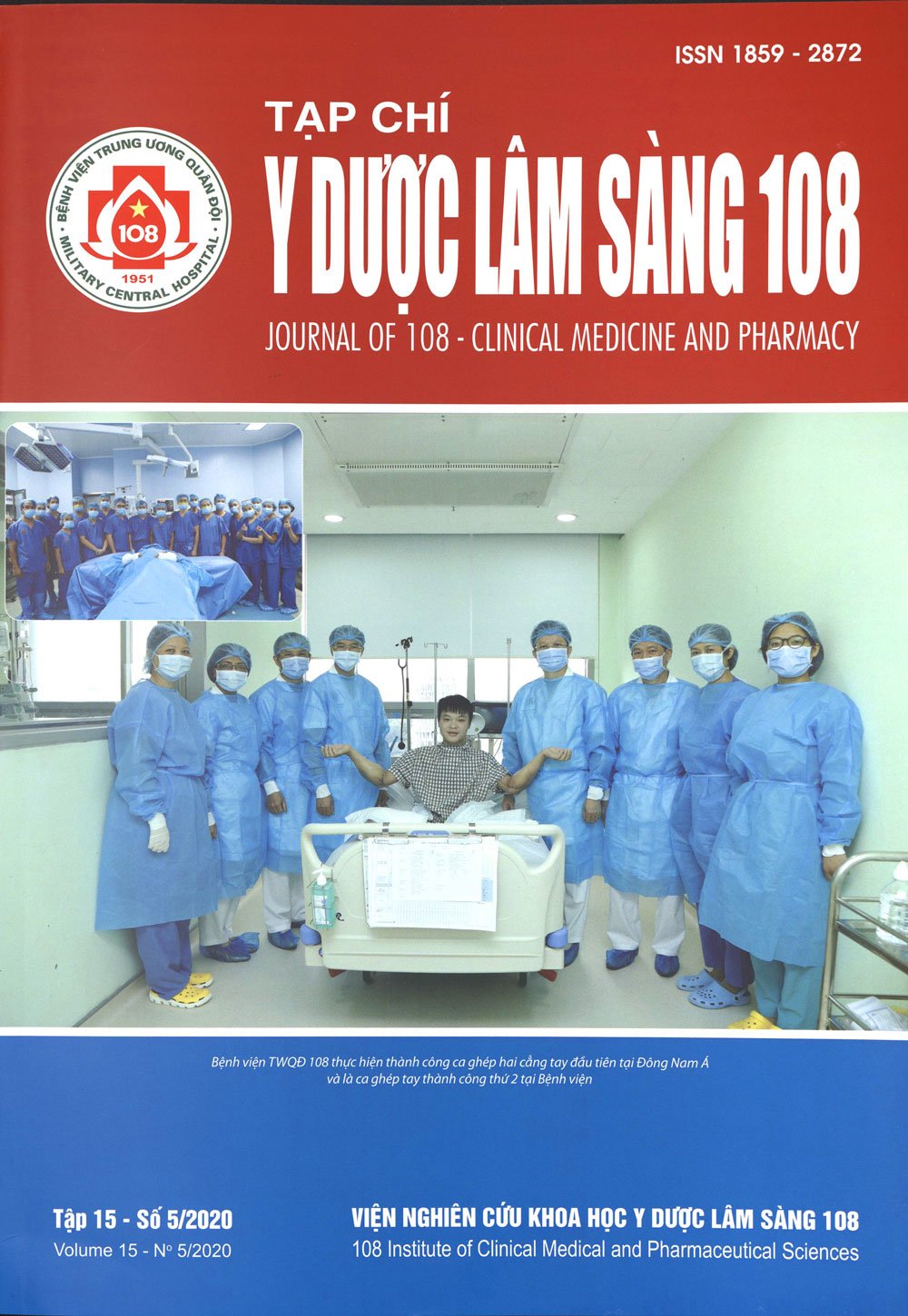Evaluating the effectiveness of interscalene brachial plexus block under the guidance of ultrasound in nerve and vascular connecting microsurgery of the forearm
Main Article Content
Keywords
Abstract
Objective: To evaluate the effectiveness of brachial plexus block under the guidance of ultrasound in nerve and vascular connecting microsurgery of the forearm. Subject and method: 45 patients, ASA I, II, aged from 16 to 65 underneath forearm microsurgery. The ultrasound-guided brachial plexus block was performed with 0,375% marcain (dosage 1.5mg/kg) mixed 2% lidocain (dosage 2mg/kg). Assessing the degree of sensory and motor block according to Hollmen's scale and Bromage scale. Ressult: The onset time of sensory block at forearm and hand was 6.70 ± 2.22 minutes and the duration time was 327.8 ± 21.48 minutes, the onset time of motor block was 13.25 ± 3.73 minutes and the duration time at grade 3 was 241.78 ± 65.67 minutes, the motor block of grade 2, 3 was at 100% of patients. The success rate was 97.77%, and no complications were noted. Conclusion: The ultrasound-guided brachial plexus block with Marcain mixed Lidocain provides high success rate and safety. The total anesthetic duration time was long for forearm and hand microsurgery
Article Details
References
2. Nguyễn Thanh Tú và cộng sự (2018) Nghiên cứu gây tê đám rối thần kinh cánh tay đường nách dưới hướng dẫn siêu âm trong phẫu thuật chi trên. Y học thực hành 1057, tr. 71-76.
3. Brain DO, Donnell, Gabrielle Lohom (2009) An estimation of minimum effective anesthetic volume of 2% Lidocaine in untrasound-guided axillary brachial plexus block. Anesthesiology 111(1): 25-28
4. Chan VW, Perlas, Bull (2007) Ultrasound guidance improve success rate of axillary brachial plexus block. Can J anesth 54(7): 594.
5. Fernando Alemanno et al (2006) The middle interscalene block: Cadaver study and clinical asessment. Regional Anesthesia and Pain Medicine 31(6): 563-568.
6. Hopkins PM (2007) Ultrasound guidance as a gold standard in regional anaesthesia. British Journal of Anaesthesia 98(3): 299-301.
7. Thomas LC, Graham SK, Osteen KD, Porter HS, Nossaman BD (2012) Comparison of Ultrasound and nerve stimulation techniques for Interscalene brachial plexus block for shoulder surgery in a residency training environment: A randomized, Controlled, Observer-Blinded Trial. Ochsner J 12(1): 86.
8. Anil Ratnawat, Fateh Singh Bhati, Chanda Khatri et al (2016) Comparative study between never stimulator guided technique and ultrasound guided technique of supraclavicular nerve block for upper limb surgery. International Journal of Research in Medical Sciences 4(6): 2101-2106.
9. Singh S et al (2015) An evaluation of brachial plexus block using a nerve stimulator versus ultrasound guidance: A randomized controlled trial. J Anaesthesiol Clin Pharmacol 31(3): 370-374.
 ISSN: 1859 - 2872
ISSN: 1859 - 2872
